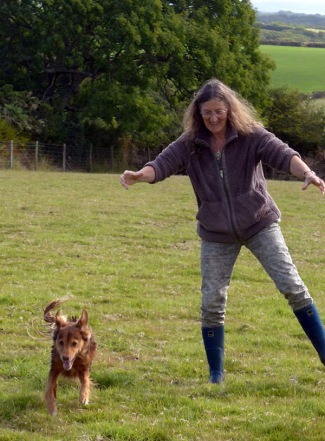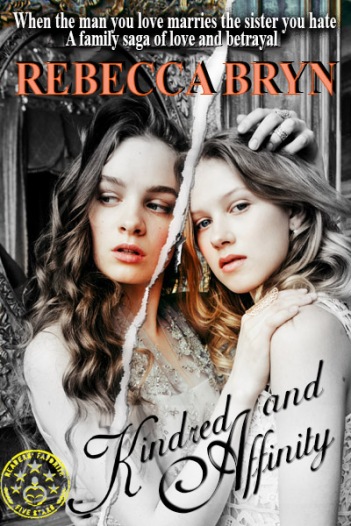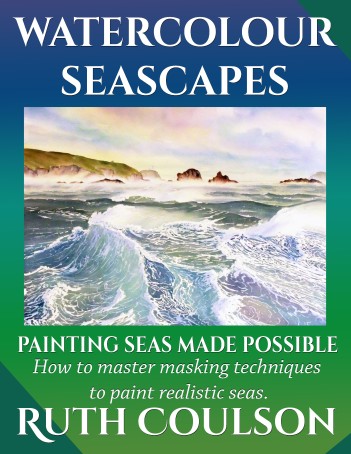I am a massive fan of this week’s guest and I can only shout GET HER BOOKS! I’ve read all but one, I have her latest on pre-order, and I’m thrilled I asked her to be my guest this week as I see one book I’ve not read – how did that slip through the net? Over to Rebecca in her own words.

Thank you, Lucinda, for letting me loose on your blog. According to my document recovery pane, this version was created on January 1st 1601 at 1 o’clock in the morning. I don’t remember being up at 1am, but it was New Year, and the 17th century was pretty boisterous, so maybe…
As you know, I live in West Wales with my husband and rescue dog and love walking and painting in watercolour. Living close to the sea, painting it in all its moods has become second nature. I love the wild beaches and moorlands of Pembrokeshire.
I began writing some fifteen years ago, although I didn’t published my first novel until 2014. So much has happened since then, I can’t believe it has only been six years. I write mainly historical fiction though I’ve dabbled in mystery and post-apocalyptic. I’ve always loved history and am fascinated by the way our past has shaped our present. At school, I studied British history, mainly from the Plantagenet kings to James II of England although the Anglo-Saxon era and the Tudor period were my favourites. As I’ve grown older, it’s been more recent history, especially social history that has drawn me in. It began with me deciding to try to discover if there was any truth in a family story about a poacher who murdered a gamekeeper and was transported to Van Diemen’s Land, and my addiction grew from there.
The tale about the family my mother called ‘loose-knickered, murdering thieves’ was true, the research fascinating, and it spawned an epic love story set in 1841, the trilogy For Their Country’s Good.
From there, I researched my grandfather’s army career and his own love story. He and his horse were sent to Egypt and Palestine during WW1. Again, the research blew me away, taught me much about myself, and gave his wartime mementos – his army fork and two cowrie shells that I treasure – a special significance. The Dandelion Clock was born.

Not wanting to ignore my father’s family, I researched for Kindred and Affinity and a marriage that went against church law and risked damnation to eternal hell. Surely that must have been true love for people of strong faith to risk damnation?
With any research for a novel, you discover a lot you didn’t suspect and much that shocks – that’s the joy of writing for me, learning something new that increases my understanding of who I am and how my world got where it is. In the time periods about which I’ve written, social injustice, the inequality and lack of rights of women, poverty, and oppression were subjects so ingrained in the periods I couldn’t ignore them, so it’s no surprise that my stories embrace these everyday challenges of the ordinary working people who built Britain by the sweat of their labour. I don’t write about the aristocracy, or royalty, or those in power, just about the lives and loves of the life blood of the country: the farm labourers, the boot makers, the lace makers, the common soldier, the women interred in Auschwitz, the girl left at home looking after the children, the poacher, the doctor, the schoolmistress, the quarry worker, and most recently, the women chainmakers of the Black Country.
Touching the Wire was inspired by a TV news report about Nazi war criminals and my latest book, The Chainmakers’ Daughter, was similarly inspired by a TV article on Flog It!
Can I tell you a bit about the chainmakers? In the early 1900s, women, and girls from the age of about four, full-time from the age of ten, made dog chains, cow chains, and horse traces working in backyard forges. They lived in abject poverty, literally on the bread line as bread was all they could afford. They worked ten or twelve hours a day to earn about four shillings a week – that’s 20p in decimal money. It was enough to buy about twelve to sixteen loaves of bread a week depending on whether the bread was at summer or winter prices. Can you image working some fifty-four to sixty hours for a dozen loaves of bread? I found that shocking. The Chainmakers’ Daughter is Rosie’s story, a girl who joins the fight against the rich chain masters for a legal minimum wage that ended in one of the most important strikes of the 20th century and paved the way for the National Minimum Wage that we enjoy today.
“Some make chains. Some wear them.” Rosie Wallace survives on three slices of bread a day. Scarred by flame and metal, she makes her life as her ancestors have: making chains for the rich chain master, Matthew Joshua. There is no hope for a better future. No hope even for a green vegetable on the table. Her life will be making chains, marrying Jack, the boy she loves, and babies every year. But when an assault by the chain master’s son threatens the very fabric of her tenuous existence, Rosie finds the courage and the reason to fight for her very life and the lives of her family and neighbours. Set in the first decade of the 20th century The Chainmakers’ Daughter is a haunting portrayal of abject poverty, ever-present death, and modern day slavery.
This lovely review was sent me from one of my beta readers, Rachael Wright, author of the Captain Savva Series.
‘Rebecca Bryn’s The Chainmakers’ Daughter is not only the most vivid and haunting portrayal of the 20th century struggle for workers and women’s rights but it is also timely and a mirror to our own modern struggles. Bryn’s novel is to be lauded for its attention to historical detail and its sharp depiction of true and crippling poverty but it is first and foremost a love story. Rosie Wallace is a woman both out of time and very much in time. Bryn has managed to produce a heroine that is recognizable as a feminist to modern readers and yet not a unicorn to the early 1900s. The Chainmakers’ Daughter is quite simply one of the most compelling and haunting works I have read in years. Characters, vices, and even steel comes alive under Bryn’s fingers and the chain of love she creates is nothing short of miraculous.’
To say this made my day is an understatement.
The Chainmakers’ Daughter is available as an e-book now for pre-order at http://mybook.to/ChainmakersDaughter and will be released on June 28th 2020. It will also be available as a paperback.

In a moment of madness, I also wrote an illustrated step-by-step how-to book, Watercolour Seascapes as my alter-ego, Ruth Coulson. Available in paperback only.
Books by Rebecca Bryn: all as e-books and paperbacks.
Historical fiction
http://mybook.to/TouchingtheWire – the women and children of Auschwitz and a man who tied to save them. – ‘Outstanding storytelling.’ IAN Book of the Year 2019. Also available as an audiobook.
http://mybook.to/DandelionClock – war changes everything. Lovers torn apart by WW1. Can their love survive the horrors of war and five years apart? – ‘Totally compelling and unmissable.’
For Their Country’s Good series – three young poachers are convicted of killing a gamekeeper and exiled to Van Diemen’s Land. Ella is the girl who wouldn’t be left behind. – ‘Truly exceptional trilogy from one of the finest writers of our time.’
http://mybook.to/OnDifferentShores
http://mybook.to/BeneathStrangeStars
http://mybook.to/OnCommonGround
and the box set of For Their Country’s Good
http://mybook.to/FTCGboxset
http://mybook.to/KindredandAffinity – When the man you love marries the sister you hate. Annie Underwood lets faith and family bigotry get in the way of love, and lets Edwin go to prevent escalating their families’ war and to save his heart. She is distraught when she loses him to her estranged sister who has no such qualms. ‘Gritty and realistic.’
Mystery
http://mybook.to/SilenceoftheStones – Can Alana discover the secret written in the stones before her daughter is sacrificed by an eccentric old lady? Perjury, wrongful imprisonment, and a tissue of lies. – ‘Beautifully choreographed tale of murder, deceit, and redemption.’
Post-apocalyptic
http://getbook.at/WhereHopeDares – When a young healer is kidnapped to fulfil an ancient prophecy, her husband heads into peril to rescue her and discovers that prophecy can be dangerous. ‘Holy cow!! – What an amazing book.’
Non-fiction by Ruth Coulson
http://mybook.to/WatercolourSeascapes – a how-to book with six detailed step-by-step demonstrations to paint seascapes in watercolour. Tackles the difficult subject of using masking fluid. ‘A lovely book. The techniques work well.’
Website: www.rebeccabrynblog.wordpress.com
Facebook: www.facebook.com/rebecca.bryn.novels
Twitter: www.twitter.com/rebeccabryn1
IAN: www.independentauthornetwork.com/rebecca-bryn
Amazon: http://author.to/RebeccaBryn
Thank you for reading, and if you pick up one of my books, I’d love to know what you think of it.
Thank you so much Rebecca for being my guest this week and for such an interesting chat.
If you are an author and would like a guest spot, then leave a comment below, or pm me via Facebook, or through my email, and you can find this on my website.
Lucinda











